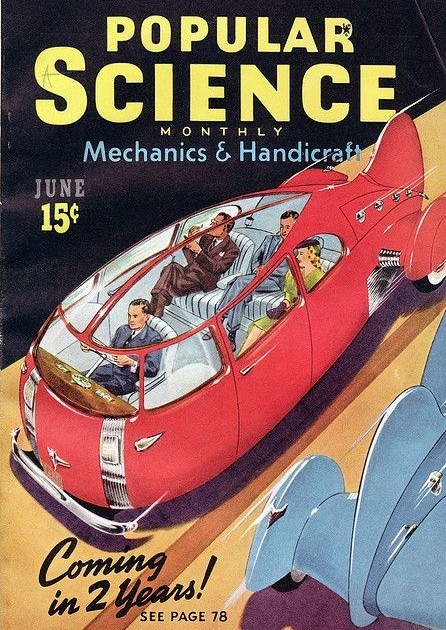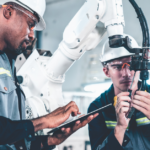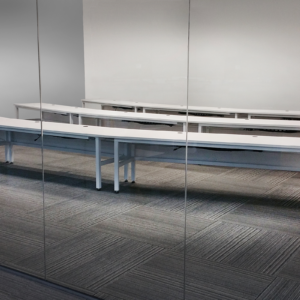After many years of incremental innovation, we are in a golden age of invention in aerospace. We take a look at some of the most interesting and exciting new developments taking place in aerospace technology today. 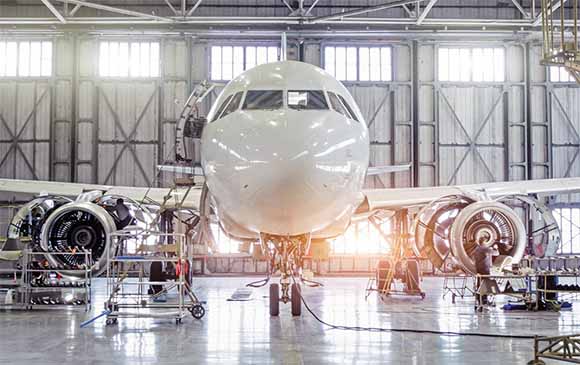 An aerospace milestone went mostly unnoticed by the flying public, as another Boeing 737 — destined for service in Southwest Airlines’ all-737 fleet — rolled out of Boeing’s Renton, Washington plant this past March. What was so special about this particular plane? This one marks the 10,000th Boeing 737 built since its debut in 1967, making 737s the best-selling passenger jet of all time. (The Airbus A320 family is in second place, with more than 8,000 sold.)
An aerospace milestone went mostly unnoticed by the flying public, as another Boeing 737 — destined for service in Southwest Airlines’ all-737 fleet — rolled out of Boeing’s Renton, Washington plant this past March. What was so special about this particular plane? This one marks the 10,000th Boeing 737 built since its debut in 1967, making 737s the best-selling passenger jet of all time. (The Airbus A320 family is in second place, with more than 8,000 sold.)
With current factory orders on the books to build another 4,600 aircraft, Boeing will be flying passengers on 737s well into the future — an amazing feat for what is now a 51-year-old design. Sure, the 737 has been heavily modified over the years. Updated versions now feature glass cockpits, nearly double the passenger capacity, and twice the original flight range. But even the latest generation, the 737 MAX variant, shares considerable “vintage” design elements with Boeing’s first passenger jet, the 707 (introduced in 1957), including the same nose design, cockpit layout, and fuselage cross-section.
So the question is “when are we going to see something really new in aerospace design?”
To find out, join us as we take a look at what’s on the horizon in the aerospace industry — some of these future developments may surprise you.
1. Would you Fly on an Air Taxi Without a Pilot on Board?
Despite the fact that futurists over the past eight decades have been predicting that flying cars will become commonplace in “just a few years,” we’re going to go out on a limb and say this time it looks like it’s really happening.
What makes us so confident this time?
First, there is a burgeoning market for quick hops across urban environments, particularly in the world’s mega-cities where road-based transportation is bogged down in endless traffic jams. For example, Airbus has established a helicopter taxi service, which opened its second base of operations in Mexico City. Boeing and Uber have also indicated they want in on the flying taxi service action as well.
There are also a couple of dark horses in the race to develop air taxis – Joby Aviation, based in the SF Bay area, and New Zealand-based Kitty Hawk. Joby recently closed a $100 million investment round, while Kitty Hawk is underwritten by Google co-founder Larry Page. Both projects are fairly far along — to the point of applying for FAA experimental aircraft permits.
Recently revealed documents indicate that the US military is taking an interest as well.
Kitty Hawk’s Cora aircraft prototype takes off and lands vertically, flies without a pilot on board, and utilizes all-electric propulsion.
So are you ready to fly in an air taxi without a pilot? The jury is still out on how the public will react to this new technology. Given that recent polling indicates that two-thirds of Americans are uncomfortable with the idea of riding in an self-driving car, it remains to be seen how long it will take for us to become comfortable with self-flying air taxis.
2. Electric Propulsion Takes Flight
When talking about pilotless air taxis, the lack of a human pilot often gets all the attention. But the all-electric propulsion systems are just as revolutionary.
NASA has been investigating the implications this shift toward what it calls Distributed Electric Propulsion for several years now. As it turns out, lightweight electric motors allow aerospace engineers to rethink the engine configurations — as a result, they may look much different than conventional configurations with either two or four jet engines mounted under the main wing.
(Plane designers settled on this configuration because it offers the best combination of serviceability and risk prevention. For example, by mounting the engines forward of the wing, parts such as fan blades jettisoned from uncontained failures have less chance of puncturing wing-mounted fuel tanks, which could lead to catastrophic in-flight fires.)
Thanks to the relatively light weight of electric motors, NASA aerospace engineers have proposed mounting a whole series of small propulsion units along the wing, a configuration that offers more flexibility in managing the airflow over the wing’s control surfaces.
As this whitepaper says, aircraft electrification is not a question of if, but when.
But when is when? For large scale passenger aircraft, all electric propulsion is probably decades away. Just as we’ve seen in the automotive industry, there will likely be intermediate “hybrid” propulsion systems brought to market until the technology matures.
Entrepreneurs, however, see opportunities in the regional airline market. Start-up Zunum, which counts Boeing as an investor, is eyeing a future of small all-electric regional aircraft.
In the meantime, it’s in general aviation is where we will probably see the most growth in electric propulsion planes. Pipistrel, based in Slovenia, was among the first manufacturers to introduce all-electric propulsion models for sale to the public. It’s marketing one of its models as a trainer aircraft: the reduced complexity of managing an electric engine, plus lower fuel costs, make it an attractive choice for aviation schools.
3. Virtual Reality Interiors Make Passenger Jets More Fuel Efficient
If you’ve ever taken a look or flown in a military transport aircraft, the first thing you’ll notice is they usually lack passenger windows. Why is that? Well, it turns out that, in engineering terms, providing windows for passengers is a costly exercise. Not only are the window hardware components themselves heavy (a no-no for aircraft designers), but, as aerospace engineers discovered in the 1950s during the investigation of a series of unexplained De Havilland Comet jetliner crashes, repeated pressurizations can lead to cracks forming at the edges of windows that can suddenly can rip the fuselage apart in flight. To prevent this from happening, aircraft designers carefully reinforce each window opening to prevent the formation of stress and fatigue cracks — but this comes at a cost due to the weight penalty (increased weight increases fuel consumption over the life of the aircraft) and the need for heightened inspections around windows to find any evidence of cracks developing.
So why not follow the lead of military transport aircraft and avoid the problem altogether by eliminating most of the passenger windows in the first place? The answer: it’s not popular with the public, mainly due to the claustrophobic conditions inside passenger jets.
So why has the global airline giant Emirates introduced windowless first class cabins in their newest Boeing 777-300ER aircraft? The answer, according to Emirates President Sir Tim Clark, is simple: they have incorporated “virtual windows” in the cabin, using live camera images of the outside. According to Clark, the goal of Emirates was to have a fleet of aircraft with no windows at all. In an interview with the BBC, he said, “Now you have one fuselage which has no structural weaknesses because of windows. The aircraft is lighter, the aircraft could fly faster, they’ll burn far less fuel and fly higher.”
Airbus is proposing to go in another direction for their Airbus 2050 concept plane; they predict that their future passenger aircraft will use translucent membrane materials for the aircraft fuselage — essentially making the exterior skin of the aircraft transparent — affording passengers a panoramic view of the outside.
4. Introduction of New Advanced Materials and AI-based Design Strategies as Additive Manufacturing Becomes Mainstream
If you looked carefully at the Airbus 2050 concept aircraft, you might have noticed that the reinforcing ribs weren’t at all like the conventional concentric rings that are found in most modern aircraft; instead, the Airbus 2050 has ribs in a seemingly random, almost biological, pattern.
What’s going on here? We’re in the middle of an engineering revolution thanks to the convergence of three technologies: AI-driven design, additive manufacturing, and new materials.
To illustrate the point, let’s take the case of the new bulkhead panel for the A320 family of aircraft. The panel’s structure, with its seemingly, randomly placed reinforcement “bars,” looks unlike anything a conventional aerospace engineer would design. And that’s the point, the structure was designed by an artificial intelligence powered system, which looked at millions of design solutions to find the one that best satisfied the design constraints for fit, function, cost, weight, and strength.
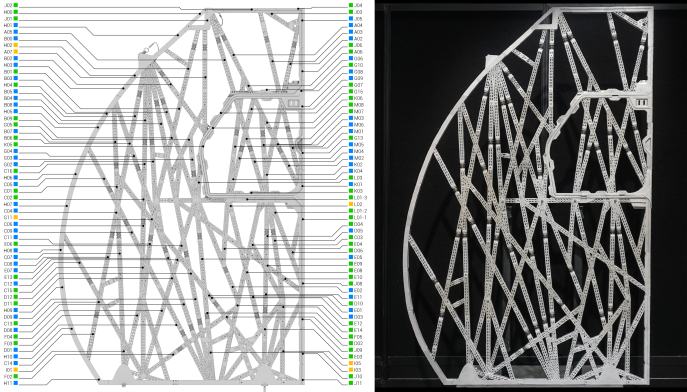
Such a delicate design would be difficult to manufacture by conventional means. This is where additive manufacturing technologies (commonly referred to as 3D printing) come into play. Airbus, like other aerospace manufacturers, are increasingly turning to additive manufacturing technology to create complex yet lightweight components, such as this bulkhead design.
The final piece of the solution required new advances in materials science.
But wait… you might ask yourself, “I thought 3D printing was limited to printing out parts made of plastic.”
That’s no longer the case. Metals are now commonly used in 3D printing. In fact, as part of this project, APWorks, an Airbus subsidiary, invented a new material, a second-generation aluminum-magnesium-scandium alloy (dubbed Scalmalloy®) just for this project.
New materials are also helping revive old technologies. If you are a fan of the Wright Brothers, you may recall that the original aircraft that flew on the beach at Kitty Hawk, North Carolina didn’t have movable control flap surfaces that are used on today’s aircraft. Instead, the Wrights used “wing warping” to change the airfoil shape during flight. Thanks to modern materials, this “wing warping” technique may be making a comeback, as shown in this NASA / Air Force Research Lab video:
https://www.youtube.com/watch?v=TfHUZ2C3HyA
5. Moving Beyond Traditional Non-Destructive Inspections (NDI) to Self-Diagnostic and Self-Healing Materials
Advances in material science and material testing technologies will also help the aerospace MRO (Maintenance, Repair, and Overhaul) industry.
With more than eight decades of experience repairing and maintaining metal fuselage aircraft, the industry has developed a range of sophisticated Non-Destructive Inspection (NDI) techniques, such as magnaflux and x-ray-based procedures.
With the widespread introduction of Boeing 787 and Airbus A-350 aircraft, both of which use carbon-fiber material for the majority of the external airframe, the MRO industry has been looking to establish more mature procedures for inspection and repair of these non-traditional materials.
But it wasn’t until an unfortunate fire that heavily damaged a nearly new Boeing 787 that these new repair techniques were put to the test.
The industry took a collective sigh of relief as Boeing successfully performed a major “splice” repair to the carbon fiber structure and brought the ship back into service.
What advances can we anticipate in the coming years?
How about self-healing materials? For example, material scientists are looking at ways to embed “reserve” materials inside carbon fiber structures that can be “activated” by applying heat. The reserve material expands in response to the heat, allowing it to, for example, fill a crack in the material.
If we can manage self-healing materials, what about self-inspections, is that possible too?
The answer seems to be yes. Material scientists are looking at new embedded Structural Health Monitoring (SHM) sensors that can identify structural problems in both conventional metal-based structures as well as composite materials.
6. Smart Manufacturing Techniques Improve Quality while Block Chain Technology Helps Ensure Supply Chain Integrity
As we’ve written about before, the innovations collectively known as Industry 4.0 initiatives are having an important effect on aerospace manufacturing and MRO operations. Reports on research by Capgemini indicate that, as a whole, the aerospace industry is far ahead of other major industries (including automotive, energy and utilities, consumer goods, and life science/pharma) with over 60% of companies reporting they have a smart manufacturing plan in place.
Plane makers Boeing and Airbus, which have made extensive use of CAD systems for decades, are now investing in sophisticated VR systems to visualize complex systems early in the design process. They are also incorporating an increasing number of sensors, a la Internet of Things, into their products, to provide real-time communications during the development and testing process, and to support customer support and MRO operations as the aircraft goes into service.
Blockchain technology may also solve another issue that’s plagued the aviation industry: the scourge of counterfeit parts.
If you are not familiar with Blockchain and its benefits to industry beyond virtual currencies, let us try to explain. Let’s start with the Internet, which represents a huge catalog of information, connected by links or transferred via email. Unfortunately, the Internet also lacks a “chain of custody” for these documents, making it increasingly easy for sophisticated criminals to create fraudulent documents, such as material descriptions or bills of material, etc.
The inventor of the hyperlink, Ted Nelson, anticipated this problem and created a system that keeps track of every document change and traces it back to the original author. While Nelson’s system, called Xanadu, was not commercially successful, the technology behind the Bitcoin virtual currency, known as the Blockchain, has many of these same security concepts.
That’s why some industry experts are excited about using Blockchain technology in the aerospace industry because it promises to help root out fraud by creating a traceable chain of custody across the supply chain.
Work Smart with Aerospace Manufacturing Solutions from Formaspace
If you are in the aerospace manufacturing or MRO industry, you’ll want to check out the custom solutions from Formaspace that will help your operations run more efficiently and safely.
First up are our heavy-duty workbenches. Formaspace’s Industrial Design & Engineering team is ready to create custom workstation designs — designed to integrate with your specific workflow, whether at separate stations or in a plant with multiple conveyors. Our workbenches are designed to support extra heavy materials (we offer configurations capable of supporting as much as 8,000 pounds!) thanks to their extra-strength, fully-welded steel frames. You can also choose the work surface that’s right for you, including high-pressure laminate (HPL), stainless steel, solid hardwood, electrostatic discharge (ESD) resistant surfaces, as well as chemically-resistant epoxy resin countertop materials.

Our height-adjustable desks and workstations offer an ergonomic solution for shift workers as well. You can adjust the height to suit your individual stature or change the height to a standing position during the work shift to reduce stress caused by sitting in the same position for an extended time period.
You can also make your workstations movable for more flexibility. Formaspace can fit the appropriate caster for your ESD, anti-vibration, and carrying capacity (load) requirements.

We built these 9 ft long heavy-duty workbenches (108″ x 36″) for one of the leading aerospace companies serving the US Military. Each of these benches can move heavy equipment (weighing up to 1,000lbs per item) throughout their facility. The fully-welded steel frame is manufactured from 2” wide, 11-gauge, square profile steel bars. To prevent damage caused by static electrical shocks, each bench is kitted out with surfaces made of ESD laminate material and an ESD wristband kit. There’s ample storage below, with four tool drawers and a full-depth lower shelf — plus a built-in slide-out writing surface.
Here are a few other custom projects Formaspace has manufactured for our aerospace and military customers:


Advanced Clean Room Solutions from Formaspace
We’ve moved a long way from the steam gauge era.
Today’s modern aircraft depend heavily on computerized, electronic-based aeronautics, which is why more and more aerospace manufacturing facilities not only require ESD protection but also full-sized clean rooms as well.
Whatever your requirements, Formaspace can build the right custom solution for your needs.

Let Your Manufacturing and Assembly Processes Take off with Formaspace
If you can imagine it, we can build it.
As a GSA scheduled supplier, Formaspace is fortunate to have manufactured industrial workbenches and other custom furniture projects for many of the top aerospace companies in the world, including Boeing, Lockheed Martin, NASA, and SpaceX, as well as the US military services.
Contact one of our friendly Formaspace Design Consultants today with your toughest challenges. You’ll find out we’re ready to meet that challenge.



